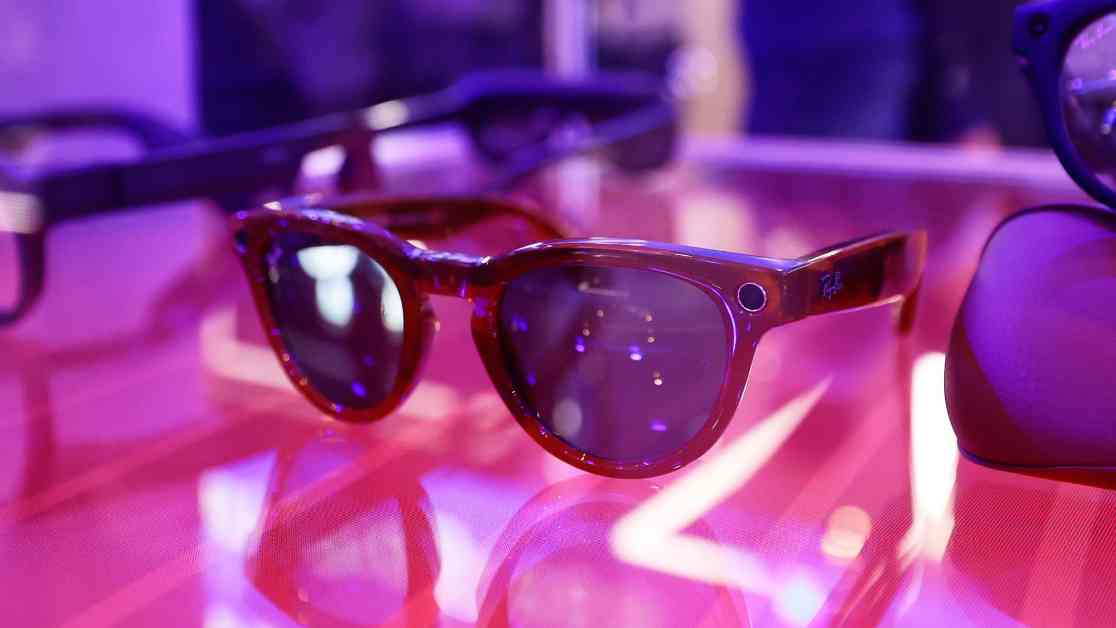Qualcomm, a leading chip designer, has recently announced a groundbreaking collaboration with tech giants Samsung and Google to develop a new generation of mixed reality smart glasses. This partnership aims to create a unique mixed-reality experience that seamlessly integrates with smartphones, offering users a different approach from Apple’s larger headset.
Mixed reality technology combines elements of augmented reality (AR) and virtual reality (VR), allowing digital images to be superimposed over the real world. This immersive and interactive experience has the potential to revolutionize how we interact with technology. Qualcomm CEO Cristiano Amon shared insights on this exciting project, emphasizing the innovative nature of the upcoming product and the new experiences it will bring to consumers.
Amon highlighted the importance of companion glasses that will complement smartphones, hinting at a future where smart glasses become a standard accessory for mobile devices. This vision aligns with Qualcomm’s commitment to diversifying its business beyond smartphones and embracing cutting-edge technologies like mixed reality. The company’s Snapdragon AR1 Gen 1 chip, specifically designed for smart glasses, showcases Qualcomm’s dedication to pushing the boundaries of technological innovation.
In a rapidly evolving tech landscape, Qualcomm, Samsung, and Google are at the forefront of developing smart glasses that promise to redefine how we engage with the digital world. By leveraging their expertise and resources, these industry leaders are poised to introduce a game-changing product that combines style, functionality, and advanced features. The potential of smart glasses to seamlessly integrate into our daily lives, offering a sleek and convenient alternative to traditional headsets, has the power to reshape the market for AR and VR devices.
The Rise of Mixed Reality Smart Glasses
The emergence of mixed reality smart glasses represents a significant shift in the way we perceive and interact with technology. By blending the physical and digital worlds, these innovative devices open up a world of possibilities for entertainment, communication, and productivity. With Qualcomm, Samsung, and Google joining forces to develop cutting-edge smart glasses, we can expect a new era of immersive experiences that transcend traditional boundaries.
Qualcomm’s focus on AI-driven applications running on-device signifies a strategic shift towards decentralized processing, offering users greater control and efficiency. By enabling AI to operate within the device itself, Qualcomm aims to deliver a seamless and responsive user experience, without relying heavily on cloud-based solutions. This approach not only enhances privacy and security but also paves the way for new and exciting applications that leverage the power of mixed reality technology.
As the market for VR and AR devices continues to grow, smart glasses present a more accessible and user-friendly alternative to bulky headsets. The sleek and stylish design of smart glasses, coupled with their seamless integration with smartphones, makes them an attractive option for tech-savvy consumers. By prioritizing comfort, convenience, and aesthetics, Qualcomm, Samsung, and Google are poised to capture a larger share of the mixed reality market and drive innovation in the wearable technology space.
The Future of Mixed Reality Technology
With the launch of Meta’s Ray-Ban smart glasses and Apple’s Vision Pro headset, the competition in the mixed reality market is heating up. Qualcomm’s collaboration with Samsung and Google signals a strategic move to stay ahead of the curve and deliver cutting-edge solutions that cater to evolving consumer needs. By combining their expertise in hardware, software, and AI, these tech giants are well-positioned to create a seamless and immersive mixed reality experience that sets new standards in the industry.
The development of smart glasses that mimic the look and feel of regular eyewear represents a significant leap forward in wearable technology. By seamlessly integrating digital overlays with the real world, smart glasses offer a more natural and intuitive way to interact with technology. From gaming and entertainment to productivity and communication, the potential applications of mixed reality smart glasses are vast and varied, promising a new era of innovation and creativity.
As Qualcomm, Samsung, and Google continue to refine their mixed reality technology, consumers can look forward to a future where smart glasses become an essential companion to their smartphones. By offering a seamless and immersive mixed reality experience, these innovative devices have the potential to revolutionize how we engage with technology, opening up new possibilities for creativity, collaboration, and connectivity. With Qualcomm leading the charge in developing advanced chipsets for smart glasses, the future of mixed reality technology looks brighter than ever.

















